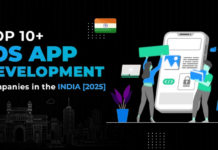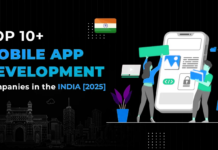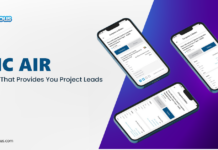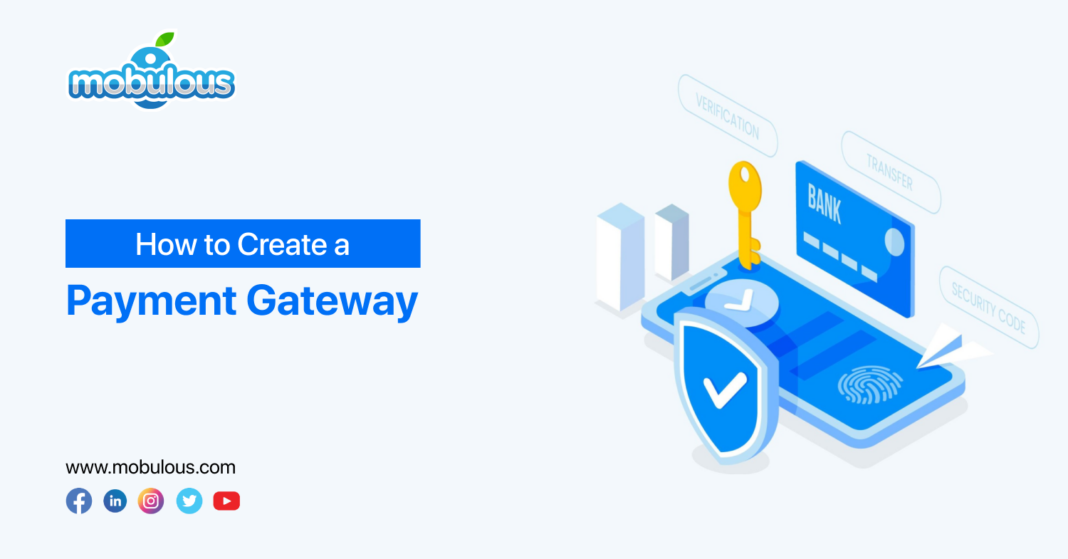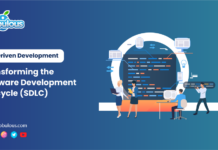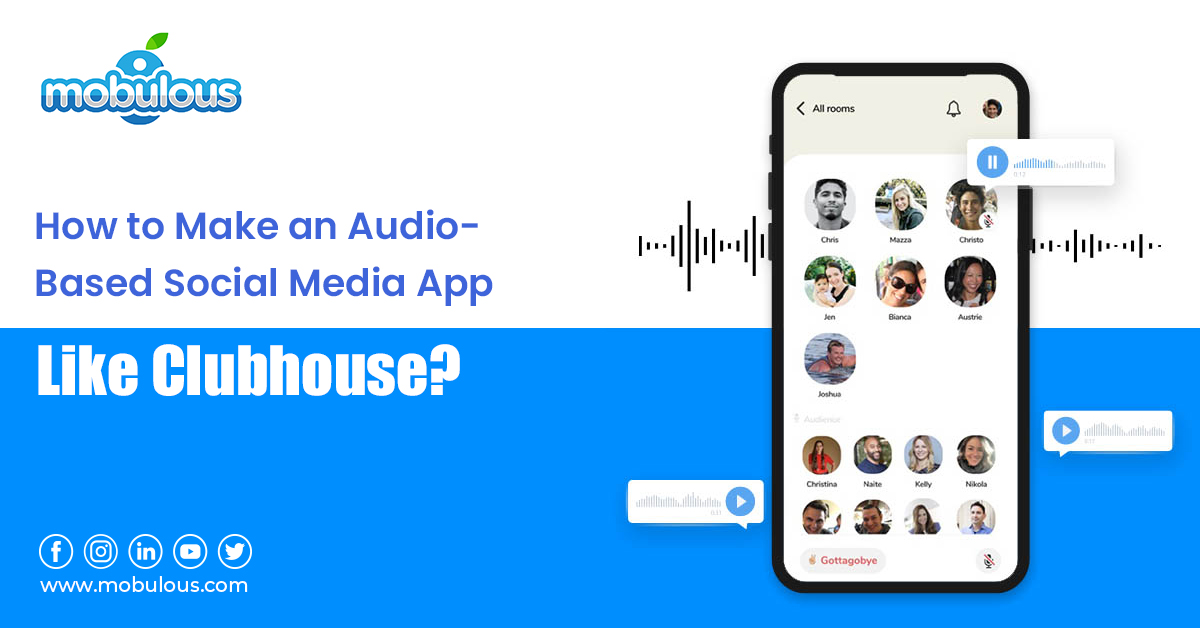How to create a payment gateway is an inquiry that constantly appears in the senses of businesses striving to launch influential and protected standards for processing their digital transactions. Creating a payment gateway is a herculean work but it is an important component for every online business.
Creating a payment gateway involves a detailed methodology of designing, developing, and integrating diverse components to promote seamless financial transactions over the Internet.
No matter if you are operating an e-commerce website, any medium, platform, or a subscription service, a dedicated payment gateway guarantees your consumers are able to pay you efficiently and securely.
Let’s delve into the convoluted segments of creating a payment gateway from scratch, analyzing the essential steps, deliberations, and technologies involved in this transformative work. So, without delaying any further, let’s get initiated.
What is a Payment Gateway?
A payment gateway is a technology that is utilized by corporations to receive digital wallet and card payments from consumers. This technology apprehends and transmits payment data from the consumer to the acquirer, and then transmits the payment approval or else declines back to the consumer.
Essentially, it functions as a bridge between your company and the financial institution controlling the payment. There are two crucial types of payment gateways such as hosted and integrated.
Hosted gateways shift consumers to a payment processor’s page in order to complete the dealing, whereas integrated gateways allow consumers to add payment details directly on your website. Thus, if you create a payment gateway for your firm, you will be competent enough to acquire the maximum advantages from it in the long run.
Seek Help From a Mobile App Development Company!
How to Create a Payment Gateway?
When considering how to create a payment gateway for Android/iOS, you would have concluded that it is a complex task. Isn’t it? Well, it is because it implicates numerous stages that require a fixed investment of time, resources, and technical expertise. The process included in building a payment gateway is listed below:
- Plan your payment gateway
- Technical requirements
- Build the UI/UX
- Select the right technology
- Develop core components
- Integrate payment methods
- Set up a merchant account
- Ensure security and compliance
- Test your payment gateway
- Deploy payment gateway
- Handle transactions
- Deploy your payment gateway
1. Plan Your Payment Gateway
The first step in order to create a payment gateway involves planning where you need to understand your specific needs, what kind of transactions you will process, and what payment methods and currencies you will support.
With this important step, you can ensure that your gateway meets your business requirements and help your business conquer the mobile app market seamlessly and hassle-free.
Make sure to look into existing payment gateways in order to learn their features and functionalities. This research will assist you to identify what works well and what doesn’t. Therefore, you will get a clear picture of what you must include in your payment gateway.
2. Technical Requirements
A powerful architecture is crucial for you to create a payment gateway, including the front-end interface, the back-end server, the database, and integration with financial institutions. Each component should work seamlessly in order to provide a smooth transaction experience.
You must keep in mind that security is paramount in payment processing. Enforcing potent encryption, regular security audits, and secure coding practices will assist you in safeguarding sensitive customer data.
3. Build the UI/UX
Designing the UI/UX, i.e., User Interface and User Experience in order to create a payment gateway is crucial for ensuring an instinctive and smooth transaction procedure. It implicates designing a visually attractive interface that directs users with the help of a payment flow seamlessly, facilitating friction, and enriching usability.
Integrating intuitive navigation, responsive design components, and clear instructions is crucial for making a positive user experience. In addition to this, optimizing the checkout process for multiple devices and different screen sizes ensures accessibility across platforms.
Make sure to concentrate on crucial UI/UX design principles in order to create high-quality payment gateways. By prioritizing user-friendly design principles and consistent testing and iteration, businesses are able to build a UI/UX for their payment gateway that facilitates trust, improves overall customer satisfaction, and boosts conversions.
An intuitive and clean design is important for user trust and ease of use. Make sure that the payment interface is straightforward when you create a payment gateway, reducing the steps needed to complete a transaction.
Concentrate on user experience by providing error messages, clear instructions, and confirmations. A seamless checkout process can significantly minimize cart abandonment rates.
Also Read:- Decoding the Secrets of Incredible UI/UX Designs!
4. Select the Right Technology
Choosing the right technology stack in order to create a payment gateway is crucial in order to make sure that your processor is top-performing and operating correctly.
- Programming Languages: Selecting the right programming language is vital for you to create your own payment processor. Popular choices include Java, Python, and PHP. Make sure to select one that suits your team’s skills and your project’s necessities.
- Frameworks and Libraries: Frameworks like Laravel for PHP, Django for Python, and Spring for Java boost the development process and provide built-in security components. Crucial libraries for managing payments include Stripe or Braintree SDKs.
Also Read:- Importance of Java Programming Language!
5. Develop Core Components
Developing core components like payment processing and transaction management is the soul of your gateway. In order to create a payment gateway perfectly, you need to build a system that captures payment information securely, communicates with banks and financial institutions, and processes transactions.
Build a transaction management system in order to handle transaction statuses, logs, and history, helping in tracking payments and resolving any issues that may occur.
For Any Query:- Hire a Backend Developer!
6. Integrate Payment Methods
Integrating credit and debit card payments is important for you to create a payment gateway. Make sure that your system sustains major card networks such as MasterCard, Visa, and American Express (AmEx).
Online wallets like PayPal, Google Wallet, and Apple Pay are becoming incredibly prevalent. Providing these options will boost sales and improve convenience.
For a majority of businesses, supporting direct bank transfers can be profitable. This basically involves incorporating banking APIs in order to foster seamless fund transfers.
7. Set Up a Merchant Account
A merchant account is mandatory to set up in order to create a payment gateway. It is a kind of bank account that enables businesses to accept payments. It is important for processing credit and debit card transactions. In order to get a Merchant account, you need to follow the below steps carefully:
- Select a merchant account provider.
- Organize your business documentation.
- Apply for the account.
- Set up and configure the account with your payment gateway.
8. Ensure Security and Compliance
Payment Card Industry Data Security Standard (PCI DSS) adherence is crucial for enduring card payments. This basically includes tracking a set of security standards in order to protect a cardholder’s secret data.
Encrypting data and utilizing a tokenization strategy additionally enrich security by ensuring that sensitive data is not stored in its raw format. As a result, guaranteeing security and adherence is obligatory for you in order to create a payment gateway.
9. Test Your Payment Gateway
In order to ensure all functionalities work as expected when it comes to create a payment gateway, you need to conduct rigorous testing of your payment gateway. This includes error handling, transaction processing, and user notifications.
Conduct an exhaustive security testing in order to recognize and fix susceptibilities. Frequent penetration testing and security audits are essential in order to manage and preserve a protected system.
10. Deploy Your Payment Gateway
After you create a payment gateway, it’s time to deploy it with the help of servers, networks, and databases. For this, you must consider leveraging cloud services for scalability and reliability.
Consistent monitoring is essential in order to identify and fix issues quickly. Regular and frequent updates and maintenance will help you keep your payment gateway protected, high-performing, and effective.
Make Your Payment Gateway Integration Accessible to Users with App Store Optimization!
11. Handle Transactions
Understand the lifecycle of a transaction from start to end, such as authorization, settlement, capture, and reporting.
Develop a strategy in order to manage and handle chargebacks and repayments efficiently, including delivering customer support and observing economic or financial organizations as required.
12. Scale Your Payment Gateway
Optimize your payment gateway for better performance in order to manage heightened transaction volumes, including load balancing, database optimization, and influential coding techniques.
As your business evolves, your payment gateway ought to scale with it. Utilize scalable and top-performing infrastructure such as cloud services and microservices architecture in order to guarantee smooth functions.
How Does a Payment Gateway Work?
When comprehending how to create a payment gateway, you will be pondering how it works. Isn’t it? Well, a payment gateway serves as a secure negotiator between a merchant’s website or application and the bank or monetary institution processing the payment.
When a consumer initiates a transaction, the payment gateway encrypts the payment knowledge and transfers it safely to the payment processor. The processor then transmits with the consumer bank in order to ascertain the transaction components and endorse or reject the payment.
Once it has been approved, the payment gateway transmits the authorization status back to the seller, allowing the transaction to proceed. All through this procedure, the payment gateway guarantees the virtue and safety of the payment data, facilitating protected and smooth transactions digitally.
Right Technology Stack for Creating a Payment Gateway
Selecting the right technology stack is crucial for you to create a payment gateway, encompassing the programming languages, frameworks, libraries, and tools you need to leverage through the development process. The appropriate technology stack for building a reliable, effective, and secure payment gateway is explained below:
1. Programming Languages
- Java: A popular choice to create a payment gateway is Java programming language because of its robustness and security features. It offers excellent scalability, performance, and a plethora of libraries that simplify the development process.
- Python: Known for its readability, simplicity, and rapid development feature. Frameworks like Django provide built-in security features that are essential for handling and managing crucial payment data.
- PHP: Popularly leveraged for web development and building payment gateways. Frameworks like Laravel offer elegant, clean syntax, and exhaustive security features, making it an excellent choice for handling transactions.
For Any Query:- Hire a PHP Developer!
2. Frameworks and Libraries
- Django (Python): It is a leading Python web framework that facilitates rapid development and practical design. This includes built-in features in order to protect against common risks such as cross-site scripting (XSS), SQL injection, and Cross-Site Request Forgery (CSRF).
- Spring (Java): An exhaustive framework for creating Java apps. It provides comprehensive support for transaction management, making it an excellent choice for making payment gateways. Spring Security integrates authorization mechanisms, thus adding an extra layer of protection.
- Laravel (PHP): A robust PHP framework is known for its appealing syntax and developer-friendly features, offering built-in support for secure coding practices and making it effortless in order to execute encryption, authentication, and other security measures.
3. Database Management Systems
- MySQL: MySQL is a trusted and popularly used relational database management system. It is generally known for its robustness, security features, and better performance. This makes it an excellent choice for storing transactional data.
- PostgreSQL: PostgreSQL is another popular relational database system that offers complex features and superior performance. Its powerful emphasis on standards compliance makes it suitable for advanced payment gateway apps.
- MongoDB: MongoDB is a NoSQL database that is able to manage extensive volumes of unstructured data that provides scalability and flexibility which are beneficial for growing businesses. Nevertheless, ensuring data consistency in financial apps can be more demanding than in relational databases.
Also Read:- Top 15 Databases to Use in 2024!
4. Front-End Technologies
- React: React is a JavaScript for developing user interfaces, enabling the creation of highly responsive and dynamic front-end apps. Its component-based architecture makes it seamless to manage and scale.
- Angular: Angular is a strong framework for building web apps, delivering a comprehensive solution for handling front-end development, and delivering functionalities like dependency injection, two-way data binding, and a modular architecture.
- Vue.js: Vue.js is a progressive JavaSript framework that is seamless to integrate with other libraries and projects. It is generally useful for building smooth and interactive user interfaces for payment gateways.
Also Read:- React vs Vue – Which one to choose for frontend development?
5. Security Tools
- OpenSSL: OpenSSL is a robust tool for securing communications and executing encryption. It supports multiple cryptographic protocols and algorithms that are important for safeguarding confidential payment data and information.
- JWT (JSON Web Tokens): JWT is a compact, URL-safe norm for portraying declarations to be transmitted between two parties. It is popularly leveraged for data exchange and authentication securely.
- HashiCorp Vault: Vault is the most suitable tool for securely accessing riddles like API keys and tokens, delivering access control, secure storage, and audit logging which are vital for retaining the security of a payment gateway.
Benefits of Creating a Payment Gateway
After learning how to create a payment gateway, it is important to understand what advantages it offers. Well, creating a payment gateway offers multiple benefits for businesses operating in the digital realm. These benefits are mentioned below:
1. Control Over Payment Process
When you create a payment gateway, you have complete authority over the payment methodology.
You are able to customize the user experience, implement detailed components tailored as per your industry needs, and optimize the checkout flow in order to maximize conversions.
2. Brand Integration
A custom-made payment gateway allows you to integrate your brand seamlessly into the payment experience.
This reinforces brand individuality and fosters trust and dedication among customers, leading to elevated brand recognition.
3. Cost Savings
In order to create a payment gateway, you need an upfront acquisition which may result in considerable cost savings in the long run.
By detouring third-party payment gateways, you are able to eradicate transaction fees and processing expenses, leading to higher profit margins for your company.
4. Flexibility and Scalability
Custom payment gateways offer unparalleled scalability and flexibility.
You are able to adjust the gateway seamlessly in order to adapt to the evolving business necessities, scale infrastructure, and incorporate unique payment methods in order to operate advanced transaction volumes without depending on exterior providers.
5. Enhanced Security
When you create a payment gateway, it allows you to implement powerful security standards tailored to your precise necessities.
You need to guarantee adherence with industry benchmarks, including PCI DSS (Payment Card Industry Data Security Standard), and perform cutting-edge encryption strategies in order to protect critical consumer information.
As a result, it facilitates the hazard of fraud and data breaches.
6. Improved Customer Experience
An instinctive and seamless payment methodology is important for consumer retention, engagement, and fulfillment.
By creating a user-centric interface and facilitating the checkout flow, you are able to enrich the general customer venture, reduce cart desertion and bounce rates, and foster customer retention and loyalty.
7. Data Insights and Analytics
Custom-made payment gateways deliver valuable understandings of consumer behavior and transaction practices.
By investigating dealing data, you are able to achieve an actionable understanding of consumer preferences, buying habits, and trends.
This facilitates you to make instructed business findings and optimize your marketing techniques.
8. Competitive Advantage
When you create a payment gateway that is tailored, it will give you a competitive advantage in the market.
By delivering premium functionalities, exceptional user experience, and innovative payment strategies, you are able to distinguish your business from opponents and implore more consumers. This influences heightened market share and revenue gain.
How Much Does it Cost to Create a Payment Gateway?
When you create a payment gateway, it can be expensive because of multifarious factors, including complexity, features incorporated, etc. Payment gateway development price typically varies from USD 35,000 to USD 200,000 and even more, surrounding security standards, software development, and integration with banking methods.
Extra expenses contain adherence with ordinances like PCI DSS which can cost between USD 5,000 and USD 18,000 on an annual grounds. Updates, maintenance, and ongoing security audits additionally contribute to the general cost of the payment gateway development.
While the initial investments are consequential, a custom-made payment gateway may lead to long-term deliverance and enriched transaction management.
How Long Does it Take to Create a Payment Gateway?
When you create a payment gateway from the very start, it normally takes 4 to 12 months, based on different factors such as the sophistication of the app, the scope of the project, etc. The methodology typically implicates numerous stages, including planning, designing, developing, testing, and launching the gateway.
The development stage, i.e., coding and integrating payment methods generally spans several months. Rigorous testing for functionality and security is essential and can add further time.
At last, app launch and fine-tuning on the basis of real-world feedback might extend the timeline further. This ensures an effective, scalable, and secure payment gateway.
How Mobulous Can Help You?
Mobulous is a leading IT company that specializes in building secured and top-performing payment gateways tailored to your explicit business requirements. With our professional team of developers and security experts, Mobulous delivers end-to-end solutions from initial planning and design to development and launch.
We ensure adherence with industry measures such as PCI DSS, integrating robust security standards in order to protect prudent and sensitive information. Our scalable infrastructure sustains unwinding transaction magnitudes, ensuring seamless implementation even as your business develops.
We offer ongoing maintenance and support, guaranteeing your payment gateway remains effective and up-to-date with the most delinquent technological advancements. Contact us and avail the top-notch services we provide.
Final Thoughts
Learning how to create a payment gateway is complicated but it is a rewarding endeavor as it empowers you to build secure payment systems, improves your technical skills, and opens wide possibilities in the booming FinTech industry.
By understanding the technical requirements, ensuring security, integrating multiple payment methods, and concentrating on user experience, you are able to build a top-notch payment gateway that fulfills your business necessities.
As the digital landscape continues to grow, staying updated with the most delinquent trends and technologies will keep your payment gateway secure, high-performing, and competitive.
FAQ’s: How to Create a Payment Gateway
Q. Can I create a payment gateway on my own?
Ans. Yes, of course, you can create a payment gateway on your own. Additionally, if you are a merchant and want to build your own payment gateway, you will only need a payment processor and an acquiring bank. Merchants require a merchant account in order to accept online payments that are provided by acquiring banks.
Q. How much does it cost to set up a payment gateway?
Ans. The cost of developing a payment gateway ranges between USD 35,000 and USD 200,00. This price may be expensive, depending on various factors such as app complexity, functionalities incorporated, etc.
Q. Is payment gateway profitable?
Ans. The business model of a payment gateway depends on the percentage and fixed fee that the merchant pays for each transaction. The amount of charge relies on the transaction mode. As a result, businesses that have ongoing transaction flow generate consistent profits for the payment gateway.
Q. Which programming language is the best for a payment gateway?
Ans. Java is a favored option when building front-end apps because FinTech demands a highly secure system and Java is reliable, secure, and capable of processing enormous volumes of data.
Q. How to create a payment gateway?
Ans. In order to learn how to create a payment gateway, you need to follow the below points carefully:
- Plan your payment gateway
- Technical requirements
- Build the UI/UX
- Select the right technology
- Develop core components
- Integrate payment methods
- Set up a merchant account
- Ensure security and compliance
- Test your payment gateway
- Deploy payment gateway
- Handle transactions
- Deploy your payment gateway
Q. Which database is used in the payment gateway?
Ans. MongoDB (Flexible data structure and high performance) is a NoSQL-based database that concentrates on flexible data structures and top performance. Its large data processing capability, scalability, and JSON-like document database model make it an excellent choice for payment systems.




